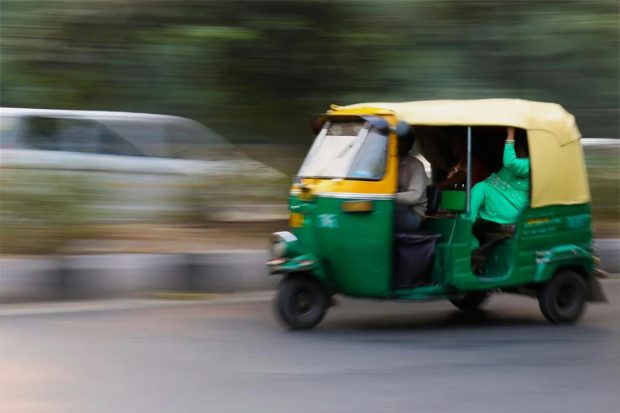Namma Yatri: Ways Forward for Accessible Ride-Hailing
– Prof. Mukta Kulkarni(IIMB) and Shanti Raghavan

Namma Yatri: Ways Forward for Accessible Ride-Hailing Almost four months ago, ride-hailing app Namma Yatri launched the ‘Purple Rides’ initiative in partnership with one of us. Since then, over 16,000 rickshaw drivers have completed more than 40,000 accessible rides and have earned over 60 Lakh. We are humbled and grateful to note this level of adoption.
Rickshaws, of course, constitute the cornerstone of transportation in Bangalore, and as we consider mobility solutions that cater to individuals with disabilities, we firmly believe that we can create an even more inclusive and accessible ride-hailing experience through some additional features and actions. Toward this, we spoke with some rickshaw-drivers who have engaged with Purple Rides, passengers with disabilities, and the larger community to crowdsource ideas. Based on their feedback and our understanding, we believe that we must focus on the following three areas.
Adaptable Design Thinking
Currently, the app allows users to disclose their disabling conditions on their profiles and allows for communication adaptations catered to hearing, visual, and mobility impairments. For example, if you note a hearing impairment, the driver’s ability to make phone calls to you is deactivated, and instead, a chat option is activated. And if you note a visual impairment, you can engage with a ‘talk back’ option. Now we could push the envelope a bit more.
For example, we could consider inclusive vehicle design. This could mean adjustable seating, easier entry and exit mechanisms, and a modular interior design that can be reconfigured to accommodate passengers with specific mobility requirements. The app itself could be revised to include the ability for real-time communication options that allow passengers to communicate specific requirements or ask for assistance during the ride. This user-centered approach can help us in co-creating creative and effective solutions with each successive revision.
Education and Sensitization
Namma Yatri drivers can currently attend training for enabling rides for those with hearing, visual, and mobility impairments. In our conversations, they noted appreciation for the nano video modules and were quite proud of the purple badge they received at the end of the ride. To better educate and sensitize other drivers, we advocate the incorporation of accessibility education and sensitization during their onboarding. Regular refresher courses to incorporate ongoing developments may also be useful.
We also believe that interactive learning materials (e.g., gamification of modules, virtual reality experiences, podcasts, and other such engaging materials) could accelerate understanding and further increase adoption. Just as we did this time, we believe that ongoing feedback from drivers will help us understand on-the-ground information toward increased accessibility.
Of course, education and sensitization efforts could also be directed toward users who can not only benefit from the knowledge of existing accessibility features, but also provide insights based on lived experiences.
Crowdsourcing Solutions
Finally, we firmly believe in the power of the community. Indeed, the entire Namma Yatri accessibility experience has been driven by the community. Multiple people have helped with both identifying and solving problems. Going forward, we can formalize these conversations.
For example, trained facilitators can begin by articulating existing solutions, relevant accessibility standards or guidelines, and accessibility challenges for which solutions are sought. Such events can be conducted physically, virtually, and in accessible formats to gather views from diverse stakeholders.
If the envisioned change involves multiple steps or challenges, the group could break them down into smaller, manageable tasks.
We have seen the power of such systematic crowdsourced solutions through one of our projects, Namma Vaani, an audio-based social media platform that enables persons with disabilities to share opportunities and ideas. We hope we can collectively replicate this model for Namma Yatri. Maybe you, dear reader, can join hands with us!
By Mukta Kulkarni and Shanti Raghavan (Mukta Kulkarni is a Professor at the Indian Institute of Management Bangalore and Shanti Raghavan is a Co-founder and Chief Enabler at EnAble India. Views are personal.)
Source: Udayavani


